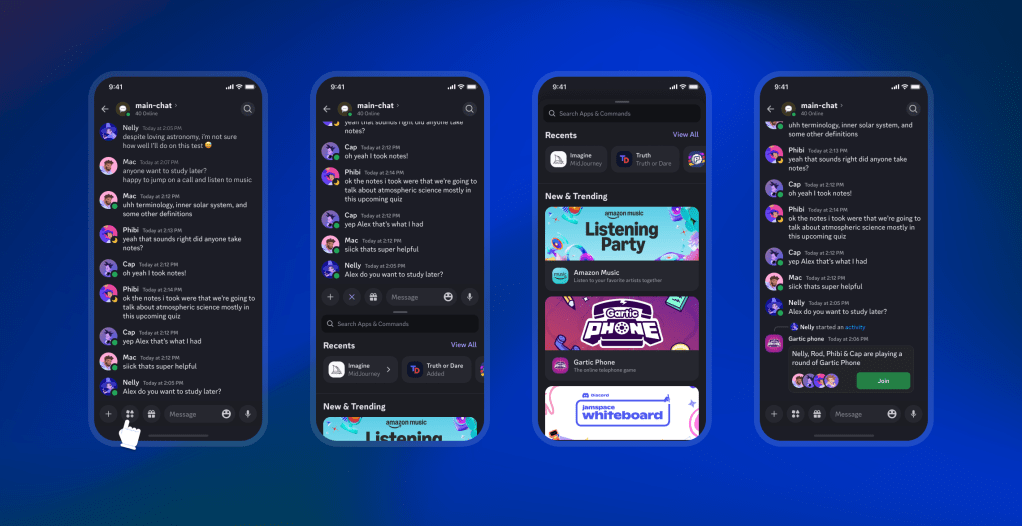Hi, friends! Welcome to Installer No. 54, your guide to the best and Verge-iest stuff in the world. (If you’re new here, welcome, so psyched you found us, and also you can read all the old editions at the Installer homepage.)
Technology
Building and securing a governed AI infrastructure for the future

Join our daily and weekly newsletters for the latest updates and exclusive content on industry-leading AI coverage. Learn More
This article is part of a VB Special Issue called “Fit for Purpose: Tailoring AI Infrastructure.” Catch all the other stories here.
Unlocking AI’s potential to deliver greater efficiency, cost savings and deeper customer insights requires a consistent balance between cybersecurity and governance.
AI infrastructure must be designed to adapt and flex to a business’ changing directions. Cybersecurity must protect revenue and governance must stay in sync with compliance internally and across a company’s footprint.
Any business looking to scale AI safely must continually look for new ways to strengthen the core infrastructure components. Just as importantly, cybersecurity, governance and compliance must share a common data platform that enables real-time insights.
“AI governance defines a structured approach to managing, monitoring and controlling the effective operation of a domain and human-centric use and development of AI systems,” Venky Yerrapotu, founder and CEO of 4CRisk, told VentureBeat. “Packaged or integrated AI tools do come with risks, including biases in the AI models, data privacy issues and the potential for misuse.”
A robust AI infrastructure makes audits easier to automate, helps AI teams find roadblocks and identifies the most significant gaps in cybersecurity, governance and compliance.
>>Don’t miss our special issue: Fit for Purpose: Tailoring AI Infrastructure.<<
“With little to no current industry-approved governance or compliance frameworks to follow, organizations must implement the proper guardrails to innovate safely with AI,” Anand Oswal, SVP and GM of network security at Palo Alto Networks, told VentureBeat. “The alternative is too costly, as adversaries are actively looking to exploit the newest path of least resistance: AI.”
Defending against threats to AI infrastructure
While malicious attackers’ goals vary from financial gain to disrupting or destroying conflicting nations’ AI infrastructure, all seek to improve their tradecraft. Malicious attackers, cybercrime gangs and nation-state actors are all moving faster than even the most advanced enterprise or cybersecurity vendor.
“Regulations and AI are like a race between a mule and a Porsche,” Etay Maor, chief security strategist at Cato Networks, told VentureBeat. “There’s no competition. Regulators always play catch-up with technology, but in the case of AI, that’s particularly true. But here’s the thing: Threat actors don’t play nice. They’re not confined by regulations and are actively finding ways to jailbreak the restrictions on new AI tech.”
Chinese, North Korean and Russian-based cybercriminal and state-sponsored groups are actively targeting both physical and AI infrastructure and using AI-generated malware to exploit vulnerabilities more efficiently and in ways that are often undecipherable to traditional cybersecurity defenses.
Security teams are still at risk of losing the AI war as well-funded cybercriminal organizations and nation-states target AI infrastructures of countries and companies alike.
One effective security measure is model watermarking, which embeds a unique identifier into AI models to detect unauthorized use or tampering. Additionally, AI-driven anomaly detection tools are indispensable for real-time threat monitoring.
All of the companies VentureBeat spoke with on the condition of anonymity are actively using red teaming techniques. Anthropic, for one, proved the value of human-in-the-middle design to close security gaps in model testing.
“I think human-in-the-middle design is with us for the foreseeable future to provide contextual intelligence, human intuition to fine-tune an [large language model] LLM and to reduce the incidence of hallucinations,” Itamar Sher, CEO of Seal Security, told VentureBeat.
Models are the high-risk threat surfaces of an AI infrastructure
Every model released into production is a new threat surface an organization needs to protect. Gartner’s annual AI adoption survey found that 73% of enterprises have deployed hundreds or thousands of models.
Malicious attackers exploit weaknesses in models using a broad base of tradecraft techniques. NIST’s Artificial Intelligence Risk Management Framework is an indispensable document for anyone building AI infrastructure and provides insights into the most prevalent types of attacks, including data poisoning, evasion and model stealing.
AI Security writes, “AI models are often targeted through API queries to reverse-engineer their functionality.”
Getting AI infrastructure right is also a moving target, CISOs warn. “Even if you’re not using AI in explicitly security-centric ways, you’re using AI in ways that matter for your ability to know and secure your environment,” Merritt Baer, CISO at Reco, told VentureBeat.
Put design-for-trust at the center of AI infrastructure
Just as an operating system has specific design goals that strive to deliver accountability, explainability, fairness, robustness and transparency, so too does AI infrastructure.
Implicit throughout the NIST framework is a design-for-trust roadmap, which offers a practical, pragmatic definition to guide infrastructure architects. NIST emphasizes that validity and reliability are must-have design goals, especially in AI infrastructure, to deliver trustworthy, reliable results and performance.

Source: NIST, January 2023, DOI: 10.6028/NIST.AI.100-1.
The critical role of governance in AI Infrastructure
AI systems and models must be developed, deployed and maintained ethically, securely and responsibly. Governance must be designed to deliver workflows, visibility and real-time updates on algorithmic transparency, fairness, accountability and privacy. The cornerstone of strong governance starts when models are continuously monitored, audited and aligned with societal values.
Governance frameworks should be integrated into AI infrastructure from the first phases of development. “Governance by design” embeds these principles into the process.
“Implementing an ethical AI framework requires focus on security, bias and data privacy aspects not only during the designing process of the solution but also throughout the testing and validation of all the guardrails before deploying the solutions to end users,” WinWire CTO Vineet Arora told VentureBeat.
Designing AI infrastructures to reduce bias
Identifying and reducing biases in AI models is critical to delivering accurate, ethically sound results. Organizations need to step up and take accountability for how their AI infrastructures monitor, control and improve to reduce and eliminate biases.
Organizations that take accountability for their AI infrastructures rely on adversarial debiasing train models to minimize the relationship between protected attributes (including race or gender) and outcomes, reducing the risk of discrimination. Another approach is resampling training data to ensure a balanced representation relevant to different industries.
“Embedding transparency and explainability into the design of AI systems enables organizations to understand better how decisions are being made, allowing for more effective detection and correction of biased outputs,” says NIST. Providing transparent insights into how AI models make decisions allows organizations to better detect, correct and learn from biases.
How IBM is managing AI governance
IBM’s AI Ethics Board oversees the company’s AI infrastructure and AI projects, ensuring each stays ethically compliant with industry and internal standards. IBM initially established a governance framework to include what they’re calling “focal points,” or mid-level executives with AI expertise, who review projects in development to ensure compliance with IBM’s Principles of Trust and Transparency.
IBM says this framework helps reduce and control risks at the project level, alleviating risks to AI infrastructures.
Christina Montgomery, IBM’s chief privacy and trust officer, says, “Our AI ethics board plays a critical role in overseeing our internal AI governance process, creating reasonable internal guardrails to ensure we introduce technology into the world responsibly and safely.”
Governance frameworks must be embedded in AI infrastructure from the design phase. The concept of governance by design ensures that transparency, fairness and accountability are integral parts of AI development and deployment.
AI infrastructure must deliver explainable AI
Closing gaps between cybersecurity, compliance and governance is accelerating across AI infrastructure use cases. Two trends emerged from VentureBeat research: agentic AI and explainable AI. Organizations with AI infrastructure are looking to flex and adapt their platforms to make the most of each.
Of the two, explainable AI is nascent in providing insights to improve model transparency and troubleshoot biases. “Just as we expect transparency and rationale in business decisions, AI systems should be able to provide clear explanations of how they reach their conclusions,” Joe Burton, CEO of Reputation, told VentureBeat. “This fosters trust and ensures accountability and continuous improvement.”
Burton added: “By focusing on these governance pillars — data rights, regulatory compliance, access control and transparency — we can leverage AI’s capabilities to drive innovation and success while upholding the highest standards of integrity and responsibility.”
Source link
Servers computers
42U server rack
Technology
Discord opens Activities, in-app games and features, to all developers

Discord announced today that it is opening development for Activities, its in-app ecosystem of apps and games, for all creators. This means that any developer can create, distribute and monetize apps on Discord via its Embedded Apps Software Development Kit. This means that Discord offers all developers an ecosystem on which to launch games and other software.
Discord first launched a developer preview of its Embedded Apps SDK earlier this year, with some early partners launching games and apps such as Death by AI, Farm Merge Valley and Krunker Strike FRVR. Developers can not only build and distribute their apps within Discord, but also monetize: Activities supports in-game or in-app purchases and marketplaces. Discord also offers different tiers of growth, with its platform fees going from 30% to 15% for the first $1 million in gross sales generated by a developer’s app.
GamesBeat spoke with Ben Shanken, Discord’s VP of product, about what opening up Activities means for both Discord itself and its users. Shanken noted that Discord has been building to the launch of its developer platform for sometime, even acquiring cloud startup Ubiquity6 with that specific intention: “This has been a multi-year project going back two, almost three years. From a very early point, we were committed and believed in the vision that we would have games embedded into discord that people could play before the game, after the game, during the game, so to speak.”
Earlier this year, Discord announced its intention to refocus on gaming and related hobbies, with CEO Jason Citron saying the company would “narrow our focus from broadly being a community-centric chat app to being a place that helps people deepen their friendships around games and shared interests.” Now the games and shared interests will have a direct pipeline to Discord’s communities.
Join us for GamesBeat Next!
GamesBeat Next is almost here! GB Next is the premier event for product leaders and leadership in the gaming industry. Coming up October 28th and 29th, join fellow leaders and amazing speakers like Matthew Bromberg (CEO Unity), Amy Hennig (Co-President of New Media Skydance Games), Laura Naviaux Sturr (GM Operations Amazon Games), Amir Satvat (Business Development Director Tencent), and so many others. See the full speaker list and register here.
What Discord brings to users and developers
Shanken noted that Discord offers something that most other platforms don’t: The gamers themselves. Discord has largely catered to and been focused on gaming communities. “Discord is where all the gamers are. It’s built by gamers, for gamers, it’s where we have 200 million monthly active users, and 90% of them play games every week. So if I’m a developer, and I’m building a game right now, and I’m already using Discord, I’m thinking, ‘This is where we already are, where the gamers already are.’ That’s the core value proposition.”
Shanken also added that Discord offers a direct way for developers to communicate with gamers. “Something we’re seeing happen more and more is that developers want to talk to their users. They can come up with new concepts. They can play, bounce ideas off of them and get unique feedback.”
He also noted that Discord’s communities were all interconnected. “The typical way that games grow virally is by getting people to share links with their friends, to invite all your friends to a game. Discord is unique in that there’s this like web of people that are connected together from group to group to group to group. When I’m playing, say, Farm Merge Valley, and my friends see that I play it, that presence will sort of broadcast across the system, causing these games to just sort of hop around. That doesn’t really exist in any form outside of Discord.”
Joshua Lu, a partner at Andreessen Horowitz on its a16z games team, also spoke with GamesBeat on what Discord offers to game developers they might not find elsewhere. “One thing that has been an ongoing challenge for the last few years in games is distribution. There are only a few distribution channels. They are more and more saturated all of the time, with thousands of games that launch every single year. It’s very hard for players to find games that they’d love to play or their friends would love to play.”
Lu added that Discord offers both discoverability amongst a large social platform, and developers can build upon their existing network on the platform when distributing the game. “Discord is the intersection of a platform that allows social communication, social interactivity, with a community that’s really excited to play games together. That, I think, is the big opportunity.”
Source link
Technology
Meta just launched AR and VR glasses you might actually want to wear

This week, I’ve been reading about AI slop and sports betting and Jony Ive, clearing my schedule for the new season of The Great British Bake Off, watching Sicario and Pirates of the Caribbean and A Quiet Place: Day One on plane-seat screens like their directors intended, insta-subscribing to Hasan Minhaj’s new YouTube show, and just relentlessly trolling people with Vergecast clips through Pocket Casts’ new feature.
I also have for you a couple of new Meta gadgets, the mobile game that will eat up all your free time, a couple of hotly anticipated new movies, the best Spotify feature in forever, and much more. So much going on! Let’s dig in.
(As always, the best part of Installer is your ideas and tips. What are you into right now? What should everyone else be reading / watching / playing / trying / building out of clay this week? Tell me everything: installer@theverge.com. And if you know someone else who might enjoy Installer, tell them to subscribe here.)
The Drop
- Meta’s Quest 3S. My biggest issues with the Quest 3 were the price and the passthrough, and this new model appears to have solved both. It’s back in “totally reasonable game console” range, and the passthrough demos looked much sharper than before. They look great, though not as good as…
- The limited-edition Ray-Ban Meta Wayfarer. I already own two pairs of Meta’s smart glasses (don’t ask), but I am still lusting over this clear pair. They’re more expensive, and they actually undo some of the good non-gadget vibes of the other models, but they look so good.
- Balatro Mobile. This might be the most recommended thing in the history of Installer — I swear, every week someone tells me how much this poker roguelike has taken over their life. And now it’s on your phone! $10, no data collected, no microtransactions, my screen time is about to go through the roof.
- Wolfs. This Clooney-Pitt Apple TV Plus movie has a fascinating backstory that says a lot about the future of Hollywood, but I also just love a big-budget flick in which movie stars say cool lines in cool ways. This appears to be exactly that.
- The new Roku Ultra. I helped review the Google TV Streamer this week, and I really love that thing. But I’m also psyched to see Roku keep pushing — the new one’s not reinventing the wheel, but it’s faster and better, and that is a very good thing.
- The Wild Robot. I’d really like to tell you to go see Megalopolis this weekend, but every single indication is that the movie is hot garbage. But people seem thrilled about this one, an animated flick about a stranded robot that sounds adorable and delightful and like something I’m going to end up watching 100 times.
- The Legend of Zelda: Echoes of Wisdom. A Zelda game… in which you get to play as Zelda. That’s the dream! This game doesn’t seem to be as big or awe-inspiring or platform-defining as Breath of the Wild or Tears of the Kingdom, but it sounds clever and fun just the same.
- Spotify’s AI Playlist feature. This is terrible news for my relentless quest to quit Spotify: the AI playlists are great. Now that the feature is available in the US, I’ve been using it to name a few bands or songs, plus an overall vibe, and it picks a few dozen songs that, at least so far, always seem to hit. Spotify is very, very good at this part of the music game.
- Social Studies. Being a kid is hard work. And this doc digs in with a group of students on how much… maybe not always harder, but definitely more complicated, social media has made being a kid in 2024. This comes from a good team, too, and I’m excited about it.
- The Nothing Ear Open. Nothing’s headphones have been really solid, and as a recent and aggressive convert to open earbuds, I’m pumped to see how these sound. They look so cool, too! Big week for clear gadgets.
Screen share
Fun fact: Joanna Stern is the main reason I ever got a job at The Verge in the first place. (That story is long and, if I remember correctly, involves her playing a fairy in a video? But I promised her I wouldn’t tell that story.) These days, she’s a columnist at The Wall Street Journal, an Emmy winner, and most recently, the creator of Joannabot, the AI chatbot that will tell you everything you need to know about the iPhone 16. (And apparently also do some other things, if you’re clever enough, but again, we’ll leave that alone.)
I asked Joanna to share her homescreen because she just reviewed the iPhone 16, which means she just had to set up a homescreen. And because she’s forever using new gadgets and switching between things, I was curious what always made it to the top of the pile.
Here’s Joanna’s homescreen, plus some info on the apps she uses and why:
I’m submitting my homescreen and my Control Center screen because I’m proud of the work I did on the Control Center. I may submit it for an award. But really, I’d like to just use this as a forum to complain about the all-in-one connectivity widget in the new Control Center in iOS 18. I don’t like it. I like the single buttons so I can easily just turn them on and off or long-press to get in there. Sadly, they have gotten rid of the single Wi-Fi button, but I read on this great website that it’s coming back in iOS 18.1.
The phone: iPhone 16 Pro Max.
The wallpaper: This is my dog Browser. It isn’t the best shot of him, but the framing is nice for putting him in the middle of the screen. My lockscreen wallpaper is this awesome retro iPod made by a designer named Shane Levine. I bought it through this site last year after featuring it in my newsletter.
The apps: WSJ, ChatGPT, Apple Notes, Google Maps, Google Docs, Google Calendar, Instagram, YouTube, Clock, Threads, Signal, Photos, Slack, Spotify, Phone, Safari, Messages, Gmail.
My apps are so basic and make me feel so basic. I work (Slack, Gmail). I message (Messages, Signal). I listen and watch things (YouTube, Spotify). I social media (Threads, Instagram). I work more (Google Docs, WSJ). If it isn’t on this main homescreen, I usually just search for it.
Before iOS 18, I had a widget stack on the homescreen with weather and time zone widgets, but I moved it off to another screen. I might move it back. I might not. Got to live a little.
I also asked Joanna to share a few things she’s into right now. Here’s what she shared:
- The Devil at His Elbow. I’m currently listening to this audiobook by my wildly talented colleague Valerie Bauerlein. It’s all about the Murdaugh murders. The writing, the details, the whole thing, is so gripping. I find myself just sitting in the garage waiting until a chapter is done.
- Full Swing. I know I’m late to Netflix’s popular golf-u-series, but I started playing golf again this summer, and I’m loving the stories of these players and how psychological the sport really is.
- Take Your Pet to School Day. My 3-year-old loves this book. I don’t want to spoil it, but the pets take over Maple View Elementary, and, well, Ms. Ellen is pissed.
Crowdsourced
Here’s what the Installer community is into this week. I want to know what you’re into right now as well! Email installer@theverge.com or message me on Signal — @davidpierce.11 — with your recommendations for anything and everything, and we’ll feature some of our favorites here every week. And for even more great recommendations, check out the replies to this post on Threads.
“Sliding Seas. It’s a match-three (or four!) game but also so much more: there’s real strategy required behind your moves to beat levels at the higher end, but it’s never unfair, and while there are in-app purchases and power-ups you can buy to make a level easier, you crucially never need to. It is the most compelling and well-suited-to-mobile game I’ve ever found and a gem I recommend without reservation.” – Jamie
“Gisnep is another daily puzzle game, this time by David Friedman of Ironic Sans. It appears as a crossword-esque grid, but the words only go across and wrap around. The goal is to reveal both a quote and the source by filling in letters from vertical columns. I’ve gotten a number of my friends hooked already.” – Kyle
“Satisfactory 1.0 launched a week ago or so. A great group of devs have effectively made a game that feels like work but is fun. If you love conveyor belts and staying up all night, this might be for you.” – Matt
“Can’t believe you haven’t mentioned switching to OmniFocus! As a fellow perennial ‘task manager switcher,’ this app is a staple in my rotation.” – Pedro
“I previously recommended App in the Air as a great travel companion, but unfortunately, it’s shutting down. If you’re looking for an alternative, Flighty is excellent, especially for travel stats, and they’re building an importer for App in the Air users.” – Vivian
“We’ve been watching English Teacher on FX. Constant laughs and, so far, each episode has been better than the last. Easily one of the funniest shows on TV right now.” – Danial
“I was gifted the Humanscale FR300 Ergonomic Foot Rocker, which is a very tech-sounding name for a very manual / mechanical rocking footrest. It’s very pleasant to use. I’ve also been standing on it sometimes… which I’m not sure is safe but sure is fun!” – Wisdom
“Repeatedly putting in my Amazon cart the Black Milanese Loop for the Apple Watch Ultra 2. I was so close to buying it like three times. Now it’s out of stock. Even Apple says early November for shipping.” – Scott
“Been playing with different LLMs using LM Studio. Integrated it into my Obsidian vault to help summarize and organize things into specific formats. It’s been extremely cool!” – Cody
Signing off
I’ve had back-to-back-to-back-to-back trips over the last two weeks, and I would just like to quickly shout out my new No. 1 travel hack: a wall charger that doubles as a big-ass portable battery. I have this Anker model, which is $55, charges a USB-C and a USB-A device simultaneously, and also charges itself so I can get 10,000mAh of power when there’s no outlet nearby. (There’s also a newer one with two USB-C ports and even faster charging but less battery capacity.) It’s huge and heavy, but this thing and a long cable are now the only charging gear I travel with, and they’re the only reasons my gadgets have survived trains and plane rides. Here at Installer, we love a sensible charging strategy, and this is as sensible as it gets.
Servers computers
Onix Solution -Rack 8U de parede 19P

Contatos Onix Solution:
Site: https://onixsolution.com.br
Facebook: https://www.facebook.com/produtosonix
Twitter: https://twitter.com/onixsolutionbr
Linkedin: https://www.linkedin.com/company/onix-security-industria
Contato: (17) 3500-7777
sac@onixsecurity.com.br
Vídeo: .
source
Technology
Windows could become a critical part of 5G and 6G rollout thanks to Japanese invention — transparent glass surface works as an antenna


5G networks have rapidly expanded worldwide, delivering faster speeds and reduced latency, however, due to the use of higher frequency bands, more base stations are required compared to 4G.
This need for increased infrastructure presents challenges, particularly in densely populated areas where site availability and installation costs are higher – such as Tokyo, the world’s most densely populated city, illustrates these challenges perfectly.
In 2018, NTT DOCOMO partnered with Japanese glassmaker AGC to address this issue by developing the world’s first glass antenna. Using AGC’s ATTOCH technology, the antenna can be installed inside existing windows, allowing buildings to seamlessly integrate into the mobile network without obstructing views or altering their appearance. It’s been improved over the years and is now fully 5G compatible.
WAVEANTENNA
The antenna is constructed using transparent conductive materials sandwiched between layers of glass, which enhances its durability while maintaining the transparent look of standard windows. The technology also features a Glass Interface Layer (GIL) that reduces signal attenuation and reflection, two common issues when signals pass through glass.
The WAVEANTENNA, as it’s known, supports 5G Sub6 frequencies, which are more effective at penetrating walls and barriers compared to millimeter waves. This makes it ideal for dense urban environments where 5G networks struggle with interference and signal loss.
Akinobu Ueda, from the Radio Access Network Engineering Department at Japanese comms giant NTT DOCOMO, explains: “It is difficult to get permission from building owners to install small cell base stations in the mid to lower floors of a building, as the base stations can spoil the scenery of an area. The same holds true for indoor installations. In addition to spoiling the interior design of a building, it’s difficult to create the ideal service area as attenuation occurs when signals pass through the building.”
Last month, JTower, a Tokyo-based company, installed the first WAVEANTENNA in the city’s Shinjuku district, marking an important milestone for the technology. The antennas have also been adapted for use in vehicles, helping to reduce dropped signals.
More from TechRadar Pro
Servers computers
Outdoor Telecom Enclosure 19 inch 20U 6565120

IP55 20U anti-theft three point lock single wall with thermal insulation 600W Air conditioner outdoor cabinet
http://www.outdoortelecomenclosure.com/china-ip55_20u_anti_theft_three_point_lock_single_wall_with_thermal_insulation_600w_air_conditioner_outdoo-14087267.html
TIANJIN ESTEL ELECTRONIC SCIENCE AND TECHNOLOGY CO., LTD is the professional outdoor enclosure manufacturer from China. The Estel have in this field more than 10 years and get good reputation from our customers.
More info please contact Hedy
Email: sales1@estel.com.cn .
source
-

 Womens Workouts6 days ago
Womens Workouts6 days ago3 Day Full Body Women’s Dumbbell Only Workout
-

 Technology2 weeks ago
Technology2 weeks agoWould-be reality TV contestants ‘not looking real’
-

 News1 week ago
News1 week agoOur millionaire neighbour blocks us from using public footpath & screams at us in street.. it’s like living in a WARZONE – WordupNews
-

 Science & Environment1 week ago
Science & Environment1 week ago‘Running of the bulls’ festival crowds move like charged particles
-

 Science & Environment2 weeks ago
Science & Environment2 weeks agoMaxwell’s demon charges quantum batteries inside of a quantum computer
-

 Science & Environment1 week ago
Science & Environment1 week agoSunlight-trapping device can generate temperatures over 1000°C
-

 Science & Environment1 week ago
Science & Environment1 week agoHyperelastic gel is one of the stretchiest materials known to science
-

 Science & Environment2 weeks ago
Science & Environment2 weeks agoHow to unsnarl a tangle of threads, according to physics
-

 News2 weeks ago
News2 weeks agoYou’re a Hypocrite, And So Am I
-

 Science & Environment1 week ago
Science & Environment1 week agoHow to wrap your mind around the real multiverse
-

 Science & Environment1 week ago
Science & Environment1 week agoPhysicists are grappling with their own reproducibility crisis
-

 Science & Environment2 weeks ago
Science & Environment2 weeks agoITER: Is the world’s biggest fusion experiment dead after new delay to 2035?
-

 Science & Environment2 weeks ago
Science & Environment2 weeks agoLiquid crystals could improve quantum communication devices
-

 Sport1 week ago
Sport1 week agoJoshua vs Dubois: Chris Eubank Jr says ‘AJ’ could beat Tyson Fury and any other heavyweight in the world
-

 Science & Environment1 week ago
Science & Environment1 week agoQuantum ‘supersolid’ matter stirred using magnets
-

 Science & Environment2 weeks ago
Science & Environment2 weeks agoWhy this is a golden age for life to thrive across the universe
-

 Science & Environment1 week ago
Science & Environment1 week agoQuantum forces used to automatically assemble tiny device
-

 Science & Environment2 weeks ago
Science & Environment2 weeks agoCaroline Ellison aims to duck prison sentence for role in FTX collapse
-

 Science & Environment1 week ago
Science & Environment1 week agoNuclear fusion experiment overcomes two key operating hurdles
-

 CryptoCurrency1 week ago
CryptoCurrency1 week agoCardano founder to meet Argentina president Javier Milei
-

 Science & Environment2 weeks ago
Science & Environment2 weeks agoNerve fibres in the brain could generate quantum entanglement
-

 News1 week ago
News1 week agoIsrael strikes Lebanese targets as Hizbollah chief warns of ‘red lines’ crossed
-

 Womens Workouts1 week ago
Womens Workouts1 week agoBest Exercises if You Want to Build a Great Physique
-

 Science & Environment2 weeks ago
Science & Environment2 weeks agoTime travel sci-fi novel is a rip-roaringly good thought experiment
-

 Science & Environment2 weeks ago
Science & Environment2 weeks agoLaser helps turn an electron into a coil of mass and charge
-

 CryptoCurrency1 week ago
CryptoCurrency1 week agoDZ Bank partners with Boerse Stuttgart for crypto trading
-

 CryptoCurrency1 week ago
CryptoCurrency1 week agoEthereum is a 'contrarian bet' into 2025, says Bitwise exec
-

 Womens Workouts1 week ago
Womens Workouts1 week agoEverything a Beginner Needs to Know About Squatting
-

 Science & Environment7 days ago
Science & Environment7 days agoMeet the world's first female male model | 7.30
-

 News2 weeks ago
News2 weeks ago▶️ Media Bias: How They Spin Attack on Hezbollah and Ignore the Reality
-

 Science & Environment1 week ago
Science & Environment1 week agoHow do you recycle a nuclear fusion reactor? We’re about to find out
-

 CryptoCurrency1 week ago
CryptoCurrency1 week agoBitcoin miners steamrolled after electricity thefts, exchange ‘closure’ scam: Asia Express
-

 CryptoCurrency1 week ago
CryptoCurrency1 week agoDorsey’s ‘marketplace of algorithms’ could fix social media… so why hasn’t it?
-

 CryptoCurrency1 week ago
CryptoCurrency1 week agoRedStone integrates first oracle price feeds on TON blockchain
-

 CryptoCurrency1 week ago
CryptoCurrency1 week agoBitcoin bulls target $64K BTC price hurdle as US stocks eye new record
-

 CryptoCurrency1 week ago
CryptoCurrency1 week agoBlockdaemon mulls 2026 IPO: Report
-

 News1 week ago
News1 week agoBrian Tyree Henry on voicing young Megatron, his love for villain roles
-

 CryptoCurrency1 week ago
CryptoCurrency1 week agoCoinbase’s cbBTC surges to third-largest wrapped BTC token in just one week
-

 News7 days ago
News7 days agoFour dead & 18 injured in horror mass shooting with victims ‘caught in crossfire’ as cops hunt multiple gunmen
-

 Womens Workouts6 days ago
Womens Workouts6 days ago3 Day Full Body Toning Workout for Women
-

 Travel5 days ago
Travel5 days agoDelta signs codeshare agreement with SAS
-

 Politics4 days ago
Politics4 days agoHope, finally? Keir Starmer’s first conference in power – podcast | News
-

 Science & Environment1 week ago
Science & Environment1 week agoQuantum time travel: The experiment to ‘send a particle into the past’
-

 CryptoCurrency1 week ago
CryptoCurrency1 week agoCrypto scammers orchestrate massive hack on X but barely made $8K
-

 CryptoCurrency1 week ago
CryptoCurrency1 week agoLow users, sex predators kill Korean metaverses, 3AC sues Terra: Asia Express
-

 CryptoCurrency1 week ago
CryptoCurrency1 week ago‘No matter how bad it gets, there’s a lot going on with NFTs’: 24 Hours of Art, NFT Creator
-

 CryptoCurrency1 week ago
CryptoCurrency1 week agoSEC asks court for four months to produce documents for Coinbase
-

 Sport1 week ago
Sport1 week agoUFC Edmonton fight card revealed, including Brandon Moreno vs. Amir Albazi headliner
-
Business1 week ago
How Labour donor’s largesse tarnished government’s squeaky clean image
-

 Technology1 week ago
Technology1 week agoiPhone 15 Pro Max Camera Review: Depth and Reach
-

 News1 week ago
News1 week agoBrian Tyree Henry on voicing young Megatron, his love for villain roles
-

 Womens Workouts1 week ago
Womens Workouts1 week agoKeep Your Goals on Track This Season
-

 Science & Environment2 weeks ago
Science & Environment2 weeks agoA slight curve helps rocks make the biggest splash
-

 Science & Environment1 week ago
Science & Environment1 week agoWhy we need to invoke philosophy to judge bizarre concepts in science
-

 Science & Environment1 week ago
Science & Environment1 week agoFuture of fusion: How the UK’s JET reactor paved the way for ITER
-

 News1 week ago
News1 week agoChurch same-sex split affecting bishop appointments
-

 Science & Environment1 week ago
Science & Environment1 week agoTiny magnet could help measure gravity on the quantum scale
-

 Technology1 week ago
Technology1 week agoFivetran targets data security by adding Hybrid Deployment
-

 CryptoCurrency1 week ago
CryptoCurrency1 week ago$12.1M fraud suspect with ‘new face’ arrested, crypto scam boiler rooms busted: Asia Express
-

 CryptoCurrency1 week ago
CryptoCurrency1 week agoDecentraland X account hacked, phishing scam targets MANA airdrop
-

 CryptoCurrency1 week ago
CryptoCurrency1 week agoCertiK Ventures discloses $45M investment plan to boost Web3
-

 CryptoCurrency1 week ago
CryptoCurrency1 week agoBeat crypto airdrop bots, Illuvium’s new features coming, PGA Tour Rise: Web3 Gamer
-

 CryptoCurrency1 week ago
CryptoCurrency1 week agoTelegram bot Banana Gun’s users drained of over $1.9M
-

 CryptoCurrency1 week ago
CryptoCurrency1 week ago‘Silly’ to shade Ethereum, the ‘Microsoft of blockchains’ — Bitwise exec
-
Business1 week ago
Thames Water seeks extension on debt terms to avoid renationalisation
-
Politics1 week ago
‘Appalling’ rows over Sue Gray must stop, senior ministers say | Sue Gray
-

 Womens Workouts1 week ago
Womens Workouts1 week agoHow Heat Affects Your Body During Exercise
-

 News7 days ago
News7 days agoWhy Is Everyone Excited About These Smart Insoles?
-

 Politics2 weeks ago
Politics2 weeks agoTrump says he will meet with Indian Prime Minister Narendra Modi next week
-

 Technology2 weeks ago
Technology2 weeks agoCan technology fix the ‘broken’ concert ticketing system?
-

 Health & fitness2 weeks ago
Health & fitness2 weeks agoThe secret to a six pack – and how to keep your washboard abs in 2022
-

 Science & Environment1 week ago
Science & Environment1 week agoBeing in two places at once could make a quantum battery charge faster
-

 Science & Environment1 week ago
Science & Environment1 week agoA new kind of experiment at the Large Hadron Collider could unravel quantum reality
-

 Science & Environment1 week ago
Science & Environment1 week agoHow one theory ties together everything we know about the universe
-

 Science & Environment1 week ago
Science & Environment1 week agoA tale of two mysteries: ghostly neutrinos and the proton decay puzzle
-

 Science & Environment1 week ago
Science & Environment1 week agoUK spurns European invitation to join ITER nuclear fusion project
-

 CryptoCurrency1 week ago
CryptoCurrency1 week ago2 auditors miss $27M Penpie flaw, Pythia’s ‘claim rewards’ bug: Crypto-Sec
-

 CryptoCurrency1 week ago
CryptoCurrency1 week agoLouisiana takes first crypto payment over Bitcoin Lightning
-

 CryptoCurrency1 week ago
CryptoCurrency1 week agoJourneys: Robby Yung on Animoca’s Web3 investments, TON and the Mocaverse
-

 CryptoCurrency1 week ago
CryptoCurrency1 week ago‘Everything feels like it’s going to shit’: Peter McCormack reveals new podcast
-

 CryptoCurrency1 week ago
CryptoCurrency1 week agoSEC sues ‘fake’ crypto exchanges in first action on pig butchering scams
-

 CryptoCurrency1 week ago
CryptoCurrency1 week agoBitcoin price hits $62.6K as Fed 'crisis' move sparks US stocks warning
-

 CryptoCurrency1 week ago
CryptoCurrency1 week agoVonMises bought 60 CryptoPunks in a month before the price spiked: NFT Collector
-

 CryptoCurrency1 week ago
CryptoCurrency1 week agoVitalik tells Ethereum L2s ‘Stage 1 or GTFO’ — Who makes the cut?
-

 CryptoCurrency1 week ago
CryptoCurrency1 week agoEthereum falls to new 42-month low vs. Bitcoin — Bottom or more pain ahead?
-

 News1 week ago
News1 week agoBrian Tyree Henry on his love for playing villains ahead of “Transformers One” release
-

 Womens Workouts1 week ago
Womens Workouts1 week agoWhich Squat Load Position is Right For You?
-

 News1 week ago
News1 week agoBangladesh Holds the World Accountable to Secure Climate Justice
-

 Health & fitness2 weeks ago
Health & fitness2 weeks agoThe maps that could hold the secret to curing cancer
-

 Science & Environment1 week ago
Science & Environment1 week agoSingle atoms captured morphing into quantum waves in startling image
-

 Science & Environment1 week ago
Science & Environment1 week agoHow Peter Higgs revealed the forces that hold the universe together
-

 CryptoCurrency1 week ago
CryptoCurrency1 week agoHelp! My parents are addicted to Pi Network crypto tapper
-

 CryptoCurrency1 week ago
CryptoCurrency1 week agoCZ and Binance face new lawsuit, RFK Jr suspends campaign, and more: Hodler’s Digest Aug. 18 – 24
-

 Fashion Models1 week ago
Fashion Models1 week agoMixte
-

 Politics1 week ago
Politics1 week agoLabour MP urges UK government to nationalise Grangemouth refinery
-

 Money1 week ago
Money1 week agoBritain’s ultra-wealthy exit ahead of proposed non-dom tax changes
-

 Womens Workouts1 week ago
Womens Workouts1 week agoWhere is the Science Today?
-

 Womens Workouts1 week ago
Womens Workouts1 week agoSwimming into Your Fitness Routine
-

 News2 weeks ago
News2 weeks agoBrain changes during pregnancy revealed in detailed map
-
Business2 weeks ago
JPMorgan in talks to take over Apple credit card from Goldman Sachs


You must be logged in to post a comment Login